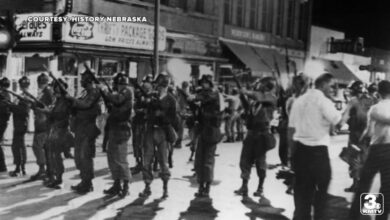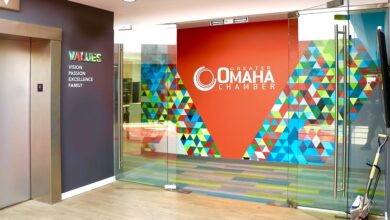How the failed Akron Innerbelt drove decades of racial inequity

In 1956, Flanvis J. Johnson set his eyes on a white-paneled, three-bedroom house with a sunroom on Akron’s Douglas Street, just west of downtown.
The Camilla, Georgia, native and decorated World War II veteran had been working two jobs to save up for this moment. To realize his dream of homeownership, Johnson, 37, alternated between shifts at Leeds Jewelry store downtown, where he cleaned and maintained the shop, and Babcock & Wilcox, a power plant where he worked as a millwright — the first African American to hold that role in the company.
Johnson purchased the home at 533 Douglas St. for $11,000 — the equivalent of $112,750 today — and settled into the vibrant neighborhood with his wife, Evelyn, and their children.
His sons, Joey and Willie, quickly bonded with the other kids who lived on the block. After walking home from Grace School, the children played football and foursquare in the street, frequently drawing the ire of an elderly neighbor, Mr. Holloway, who didn’t want the boys running through his immaculate yard. They bought penny candies from Harry’s corner store and rode their bikes the short trip to the custard stand at Edgewood and Euclid avenues, where they feasted on hot dogs, hamburgers and frozen custard, and where teenagers gathered after basketball games to catch glimpses of their crushes.
Akron Innerbelt: Project destroyed Black-owned businesses in its path
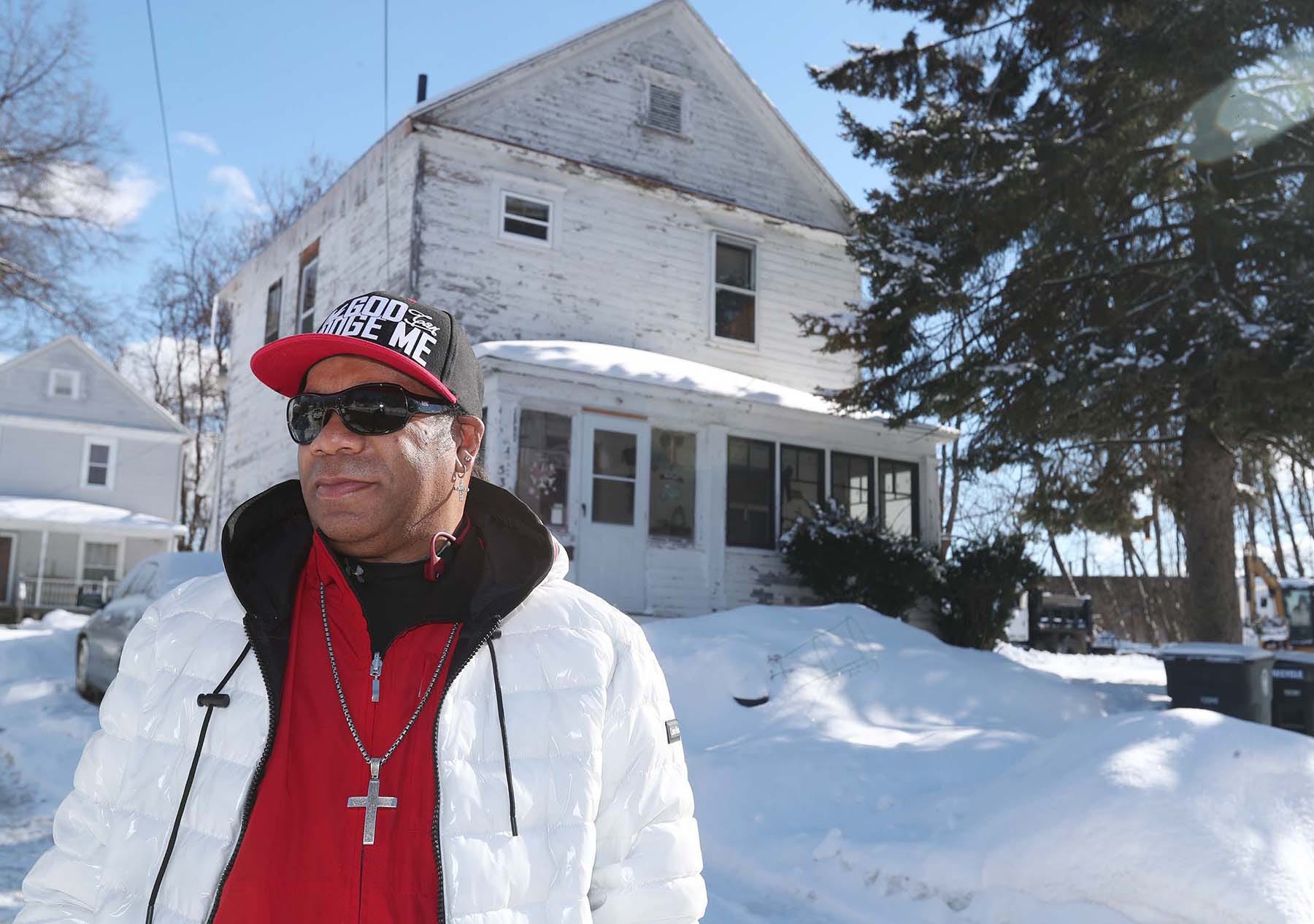
Karen Schiely, Akron Beacon Journal
There were painful memories, too.
One year, a baby died when the house across the street caught fire. The father of another household struggled with alcoholism. But the community on Douglas Street was tight-knit. Neighbors supported and looked out for each other through the ups and downs of life.
Then, one by one, people began to leave the neighborhood in the late 1960s. Rumors circulated that a highway was coming through, and the city was taking people’s homes to make way for it.
City leaders had big plans for the Akron Innerbelt, a highway connecting downtown Akron to the suburbs. Instead, it became a highway to nowhere — a never-completed road that tore apart a neighborhood and pushed hundreds of Black families out of their homes and off the path to generational wealth.
Black families that had worked hard to buy houses — long the standard for accruing and passing on generational wealth — lost them overnight. Many became renters and entered public housing developments. Some were able to purchase homes in other parts of the city, though white flight followed them. Those who kept their homes also lost, as declining property values prevented them from being able to build equity.
Incomplete records mean that we do not know the exact number of houses razed or individuals displaced by the Akron Innerbelt. A 1975 document compiled by the Akron Department of Planning and Urban Renewal notes that at least 737 households were displaced during the highway’s first two phases of construction. But that figure does not account for two later phases lasting until 1987, and former city employees, displaced residents, advocates and local historians believe the number is higher.
In 2017, the Ohio Department of Transportation began to decommission a portion of the highway, which the city acquired in September. Now, the mistakes of the past are guiding discussions about the future of a 30-acre decommissioned stretch of the highway in the heart of Akron.
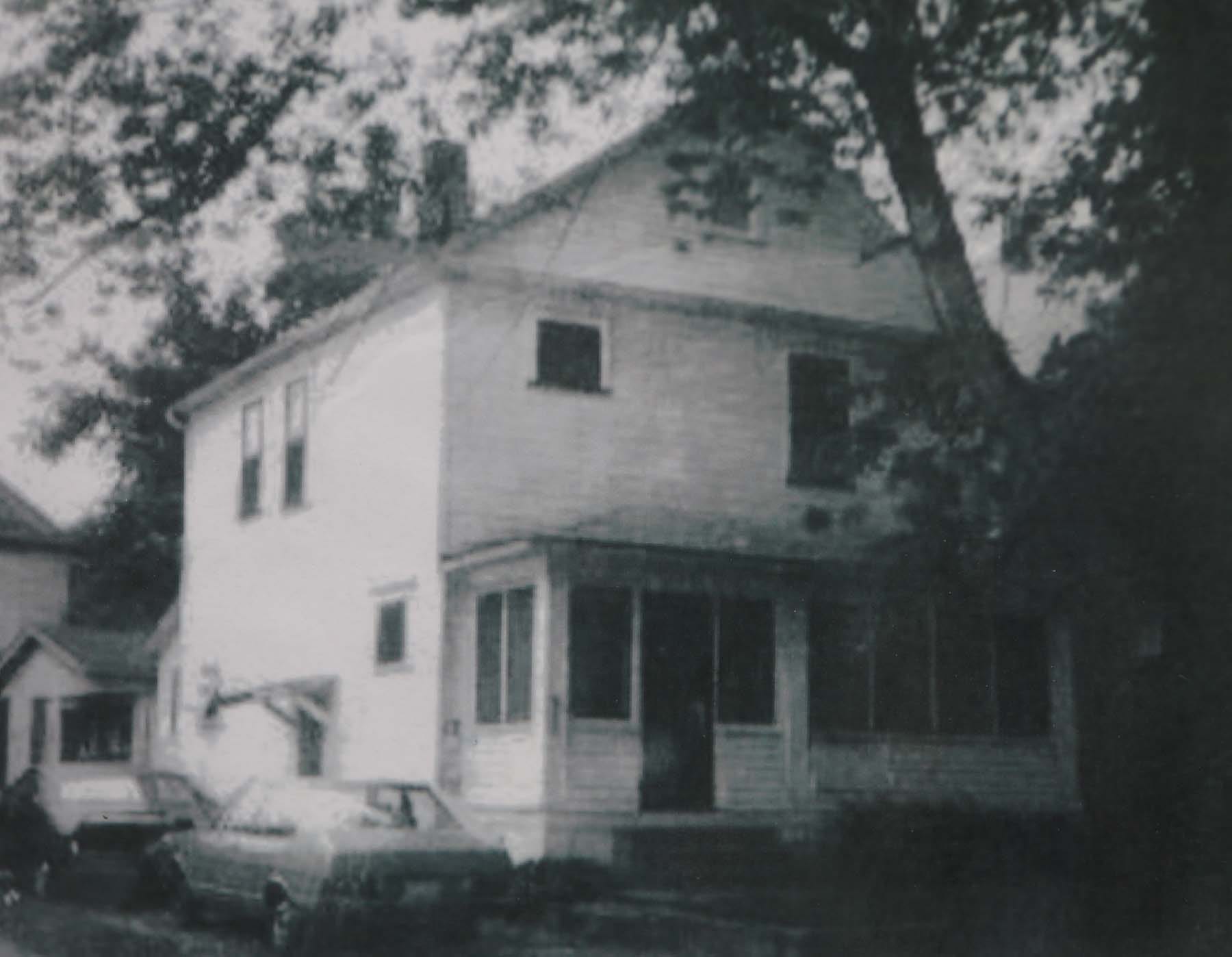
To make way for the Innerbelt in the late 1960s, city officials had been seizing property through eminent domain and offering a small amount of cash to homeowners for relocation purposes. The payouts, which frequently were contested by homeowners, were often not enough to purchase new homes.
In the late 1960s and early 1970s, the city was offering about $5,000 to each homeowner, though on rare occasions payments were as high as $15,000.
When the city did not approach Johnson to buy his house, he was devastated. Johnson knew that if he stayed in the neighborhood, his house would end up being worth next to nothing.
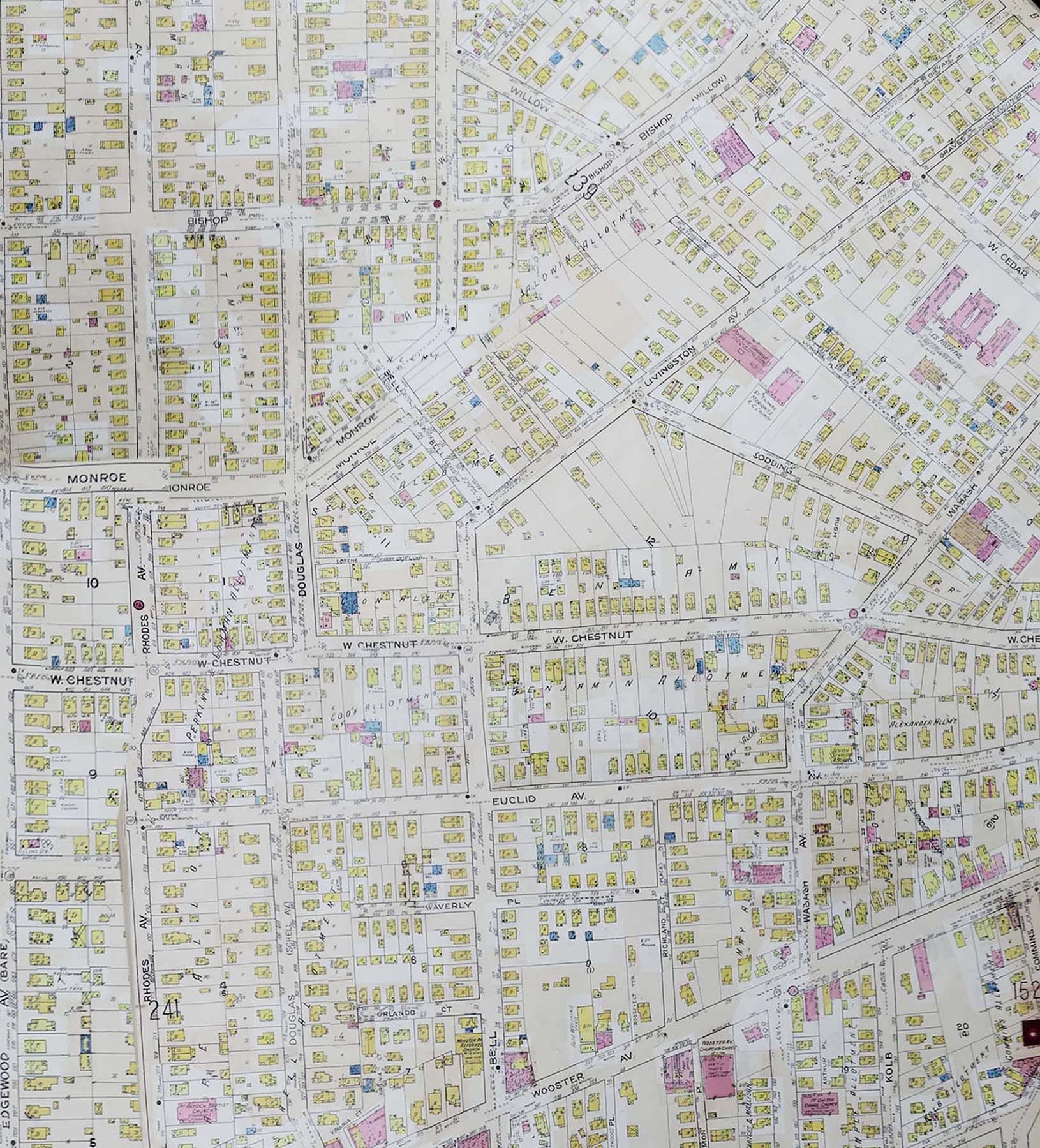
Sanborn
All of the homes to the south of his were razed to make way for the highway. The Innerbelt cut through the middle of Douglas, Bell, Berry and other nearby residential streets, turning them into dead ends.
A comparison of Akron street directories from 1968 and 1988 offers a glimpse into the extent of the destruction on Douglas Street, which lost about 150 buildings. Bell Street lost 160 buildings and Berry Avenue lost about 30.
Property values on Douglas Street and the surrounding areas impacted by the highway construction began to plummet. With so many families leaving the neighborhood, school enrollment also declined, which led to school closures, further depreciating home values.
By 1996, 40 years after Flanvis Johnson purchased it, the Johnson home was worth only $11,940. Meanwhile, average property values in Akron stood at $45,931.
Still, the Johnsons tried to maintain their home.
After Flanvis died in 2002, an aging Evelyn lived alone at 533 Douglas St.
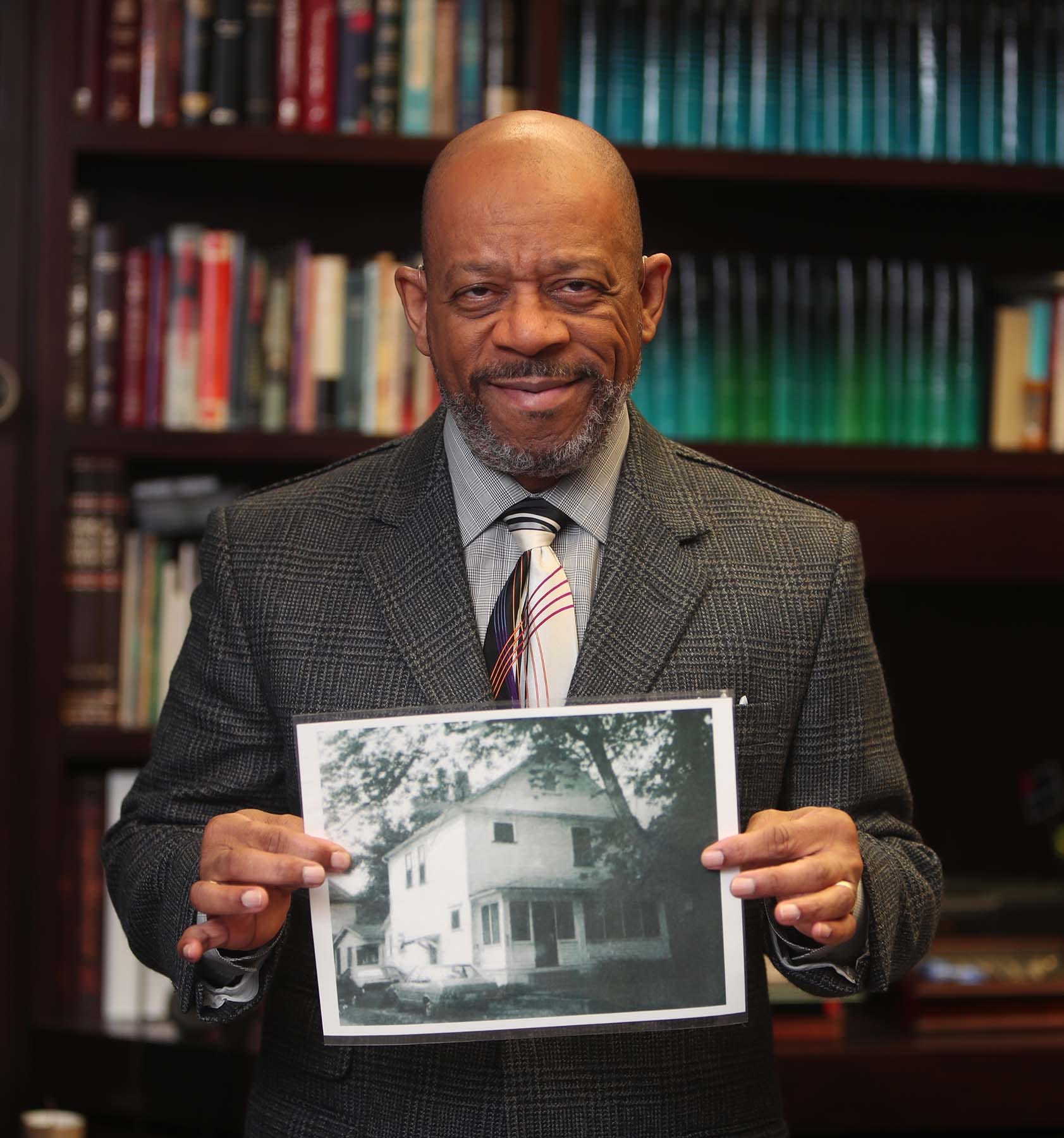
Karen Schiely, Akron Beacon Journal
Joey, who is now the senior pastor at The House of the Lord, paid off the rest of the mortgage, but the home had also fallen into disrepair, and insurance companies refused to insure it unless costly renovations were made.
Joey faced a dilemma.
He could continue pouring money into the property — money that the family would never recover — to make it safe and habitable for his mother, or he could move her into a senior living facility.
“That was a very difficult proposition. … She wanted to stay,” Joey said.
When the day came to move Evelyn into the assisted living facility, she was in tears.
“I don’t want to move. This is my house,” she cried to her son.
After Evelyn left the home, her son Willie, who had been renting another property at the time, moved into the home on Douglas Street. But he inherited unpaid bills and fell behind on taxes, and eventually lost the house in 2008. The home went into foreclosure and was sold to a private company in 2017 for $2,500.
Occupied by another owner today, 533 Douglas St. is appraised at $18,500. The home lies in a census tract where, in 2020, average property values hovered at $18,948, a fraction of the citywide average of $66,184.
Flanvis Johnson was never able to pass on the fruits of his labor to future generations of his family.
“In the African American community, rarely does anybody leave anybody anything. You end up paying to have them buried. … I was left nothing. I was left with bills,” Joey Johnson said.
“Every time I got ready to buy a house, buy a car, go to school, there is no wealth accumulated, so you have to do all of that on your own,” he said, reflecting on how the loss of property value on his family’s home after the Innerbelt’s construction decimated his family’s wealth.
After marrying, Joey and his wife moved into the Spring Hill subsidized housing development. He was not able to purchase a home until later in life and, even then, he was limited in the kind of home he could buy.
At age 69, Joey continues to work because he is unable to afford retirement.
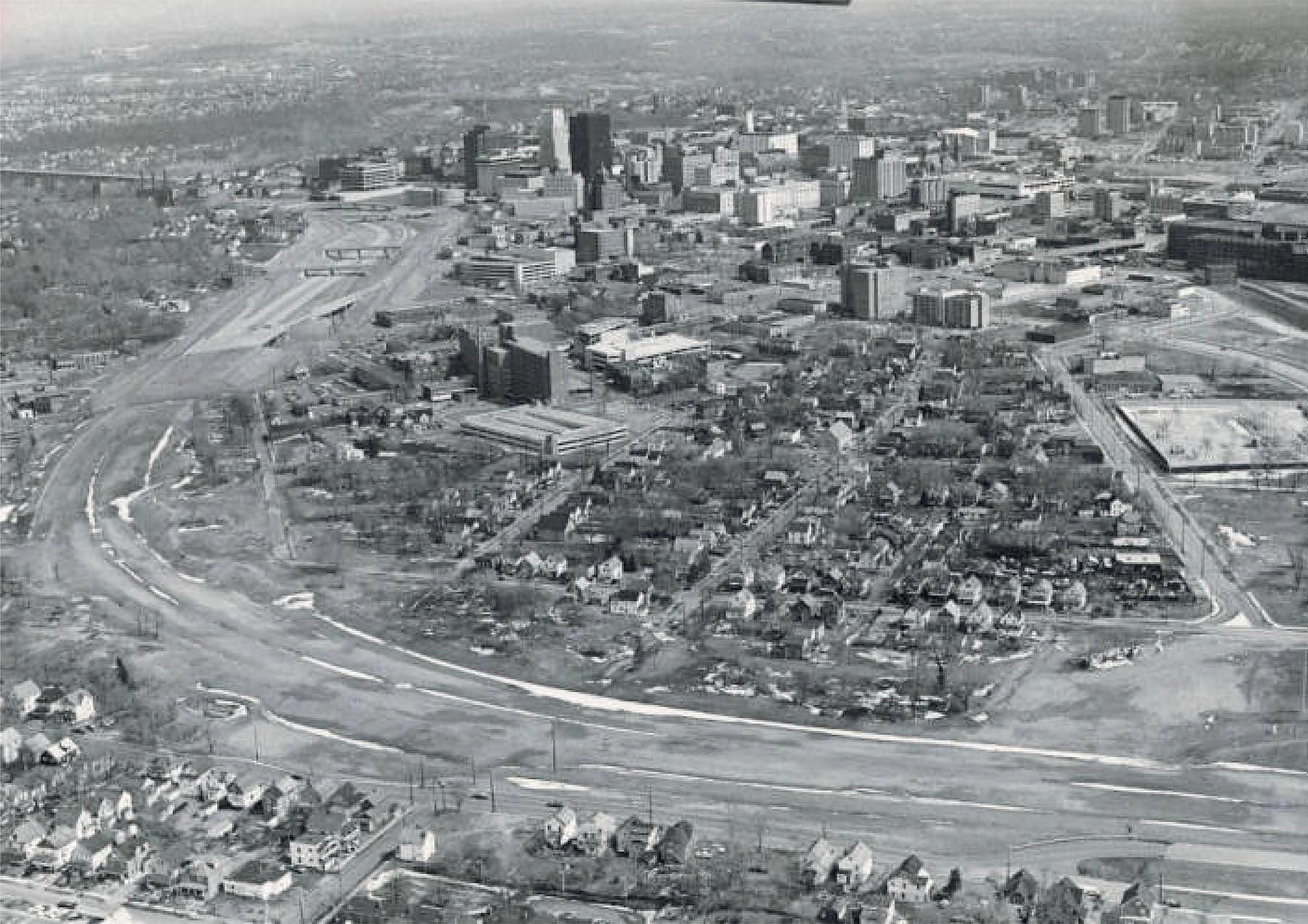
Beacond Journal file photo
Today, the median U.S. Black household possesses less than 15% of the net wealth of median white households. Homeownership and home equity account for two-thirds of a family’s net wealth, according to LaDale Winling, a professor of urban history at Virginia Tech.
In 1960, 53% of nonwhite families in Akron owned their homes, according to the U.S. Census Bureau. Though homeownership rates in Akron have since fallen for both white and Black families, in 2019, only 34% of Black families in the city lived in owner-occupied homes compared to 59% of white families.
“Equity is the key to social mobility and generational wealth accumulation and for African Americans and other racial groups, the odds have been stacked against homeownership because of racial discrimination, racial segregation,” said Eric Avila, an urban planning professor at UCLA. “When folks were able to buy a home in segregated neighborhoods, that was an achievement, but it was undermined.
“Highway construction devalued property among homeowners who lived in the vicinity of highway building projects. That story is repeated on the national level, and I think partly helps to explain the racial wealth gap. … The racial biases inherent within the federal highway building program disproportionately affected African-American homeowners and prevented an entire generation of Black homeowners from realizing generational wealth,” he said.
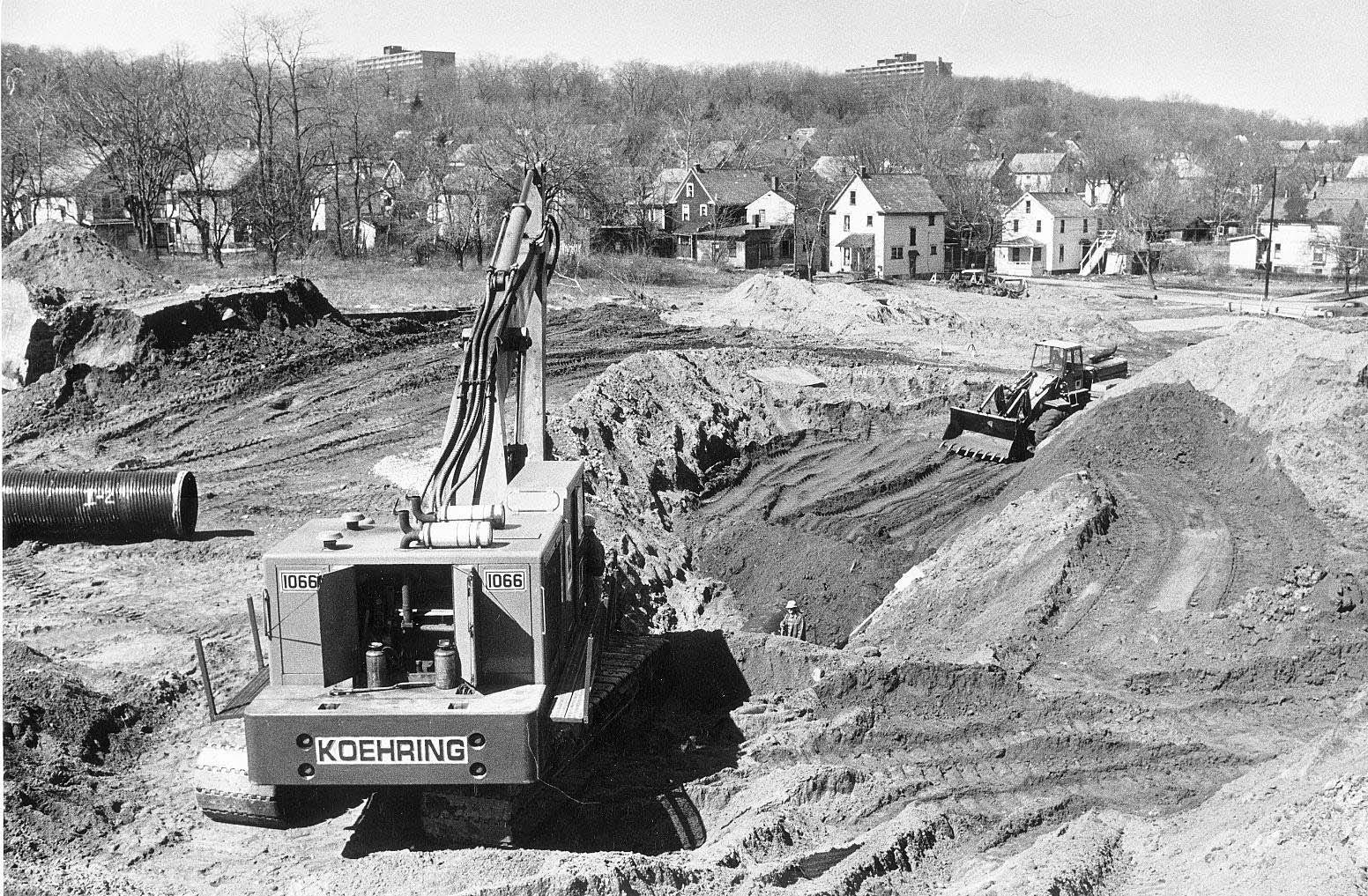
First proposed in 1960, the Akron Innerbelt was conceived as part of a 15-mile-long expressway that would run from U.S. Route 224 in Barberton through downtown Akron to state Route 8 and then through to Kent.
The rationale behind the Akron Innerbelt, which began to be built under Mayor John Ballard in 1970, was linked to a larger trend in urban planning and highway projects throughout the country.
With the rise of the automobile and the proliferation of suburban housing developments after World War II, many Americans flocked to the suburbs. Retail businesses and newly constructed malls followed them there, while downtowns began to decline. In Akron, good-paying rubber factory jobs began disappearing in the 1960s.
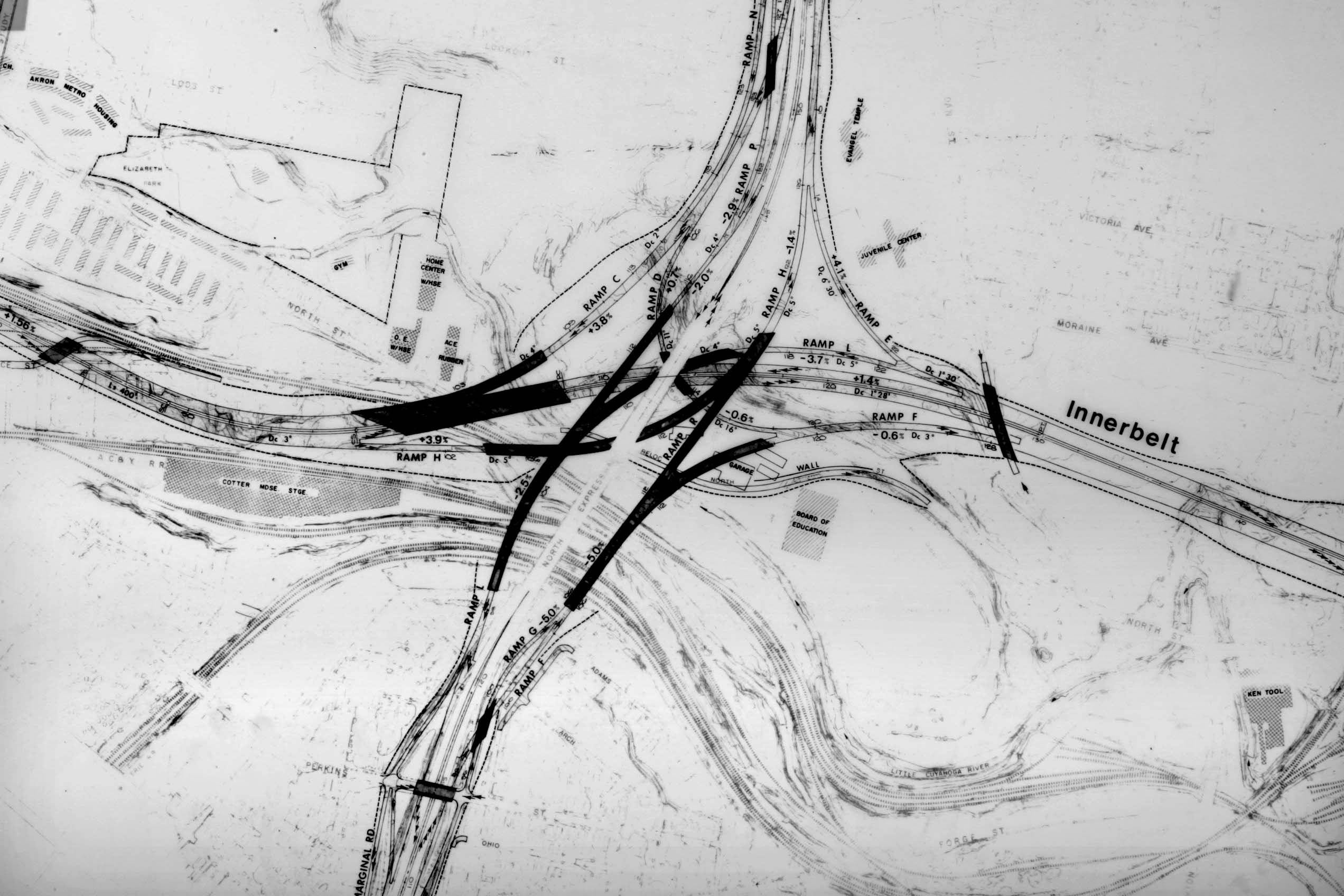
Akron Beacon Journal file photo
With support from the Federal Aid Highway Act of 1956, planners looked to the interstate highway system as a way of reversing urban decline by making it easier for suburbanites to drive to and from downtowns, where they would shop or work.
The Akron Innerbelt would “provide the much needed stimulation for further economic growth in the Akron Metropolitan Area,” concluded a 1963 report from the Akron Department of Planning and Urban Renewal.
At the time, 23,000 or 18.3% of jobs in the city were located downtown.
But the proposed location of the Innerbelt points to the structurally racist underpinnings of urban renewal and housing policies of the era nationwide, experts say. It also ran counter to a federally funded effort to invest in that neighborhood through the Model Cities Program.
It was a bypass of the Black neighborhoods … at the cost of Black neighborhoods.”
A 1939 map of Akron shows that the areas slated for demolition to make way for the Innerbelt had been redlined.
The term was used to denote neighborhoods — usually predominantly Black — that the federal government had labeled undesirable or “hazardous” and therefore risky for lenders. Consequently, banks often refused to lend to Black homeowners living in redlined areas, whether to buy homes or repair the ones they owned.
The area designated for the Innerbelt construction contained “enough blighted housing and substandard conditions to warrant either total clearance or almost total clearance,” according to the 1963 Akron report.
To enact their vision for urban renewal, planners and developers across the country followed paths of least financial and political resistance, Winling said. After decades of discriminatory lending, the new highways would run through neighborhoods where communities of color lived, which were deemed less valuable and therefore cheapest to bulldoze. These same communities also often lacked political representatives that would have stood up to the interests of the planners and builders.

Akron Beacon Journal file photo
Before the construction of the Innerbelt, Akron completed three major urban renewal projects around downtown — Grant/Washington, Lane/Wooster and Opportunity Park — which displaced significant portions of the city’s Black population. By 1975, urban renewal projects, including the Innerbelt, had relocated 3,197 households, according to municipal records. Meanwhile, in the mid-1960s, residents in the nearby affluent and white suburb of Fairlawn successfully protested and prevented the state from running Interstate 77 through their community.
“White affluent or white middle class communities had the wherewithal to block highway construction,” Avila said. “They had the political clout. They had connections in city hall. They had resources and access to forms of mobilization that African American and other minority communities did not have. So the existing pattern of highway construction today — what was built and what wasn’t built — conforms to a racially and economically skewed pattern of political resistance that was successful largely in white affluent communities and not successful in poor and/or minority communities.”
As historian Richard Rothstein notes in his book, “The Color of Law: A Forgotten History of How Our Government Segregated America,” by the 1950s and 1960s, terms like “slums” and “blight” were tossed around euphemistically to refer to Black neighborhoods. City officials tried to control the movement of Black people away from downtowns so that white suburban commuters would not have to interact with them, Rothstein wrote, and they did so through “slum clearance.”
“One slum clearance tool was the construction of the federal interstate highway system,” Rothstein wrote.
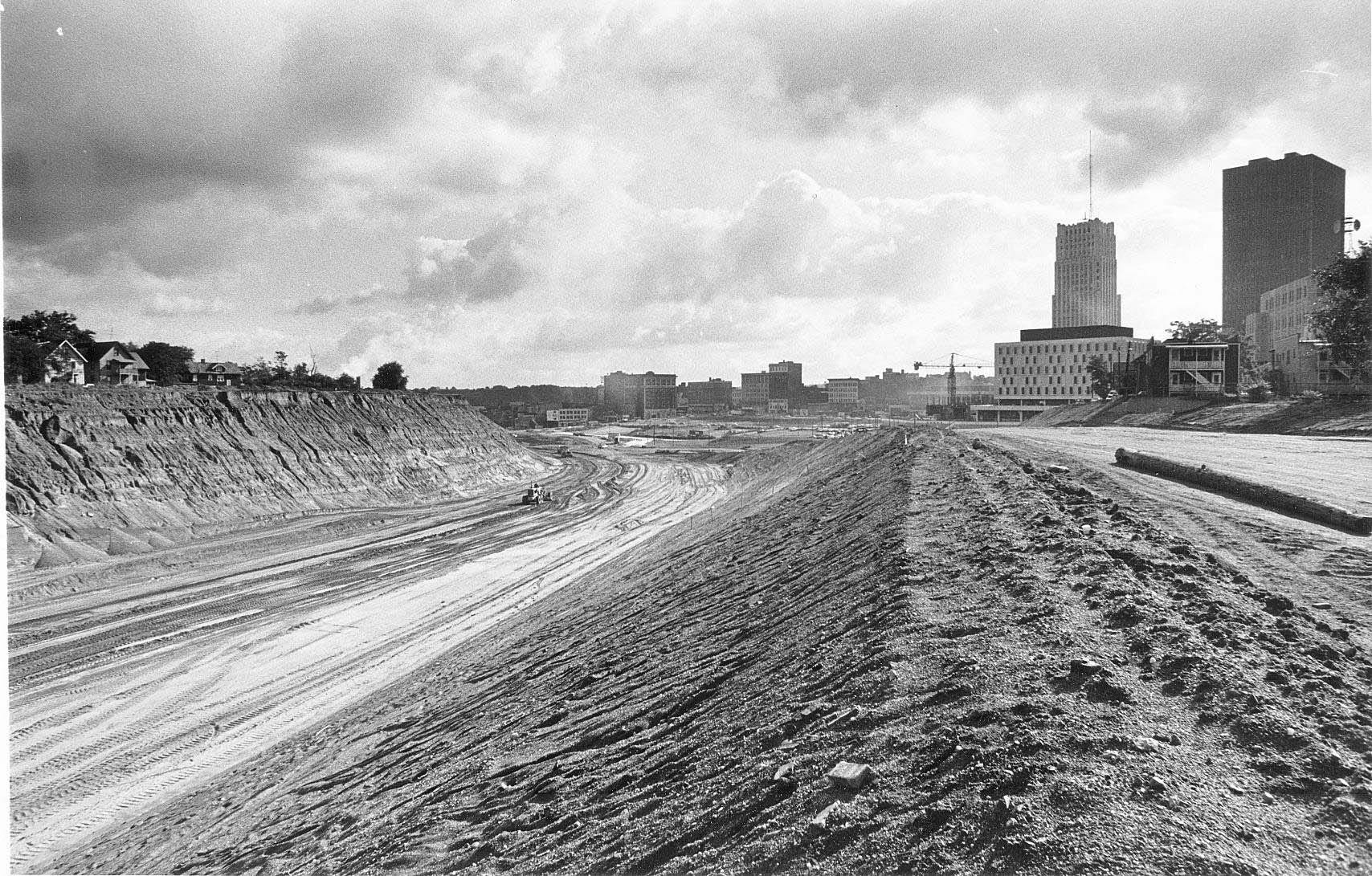
Backers of the Innerbelt project could have changed course.
In 1970, the American Institute of Architects met with Akron urban planners and proposed alternative routes to the east or west of the eventual path.
But Akron planners maintained the route, which would also cut through the center of Black commerce on Wooster Avenue and shutter more than 100 businesses, would be most efficient, best accommodate traffic and would greatly reduce costs. City officials said that adopting one of the alternative routes would have increased costs by $300,000 and delayed construction for up to two years.
Akron’s current urban planner Jason Segedy explained that because the wealth in Akron and its suburbs — like Fairlawn, parts of Copley and Bath — lie to the northwest, planners prioritized ramps to the west onto Interstate 76.
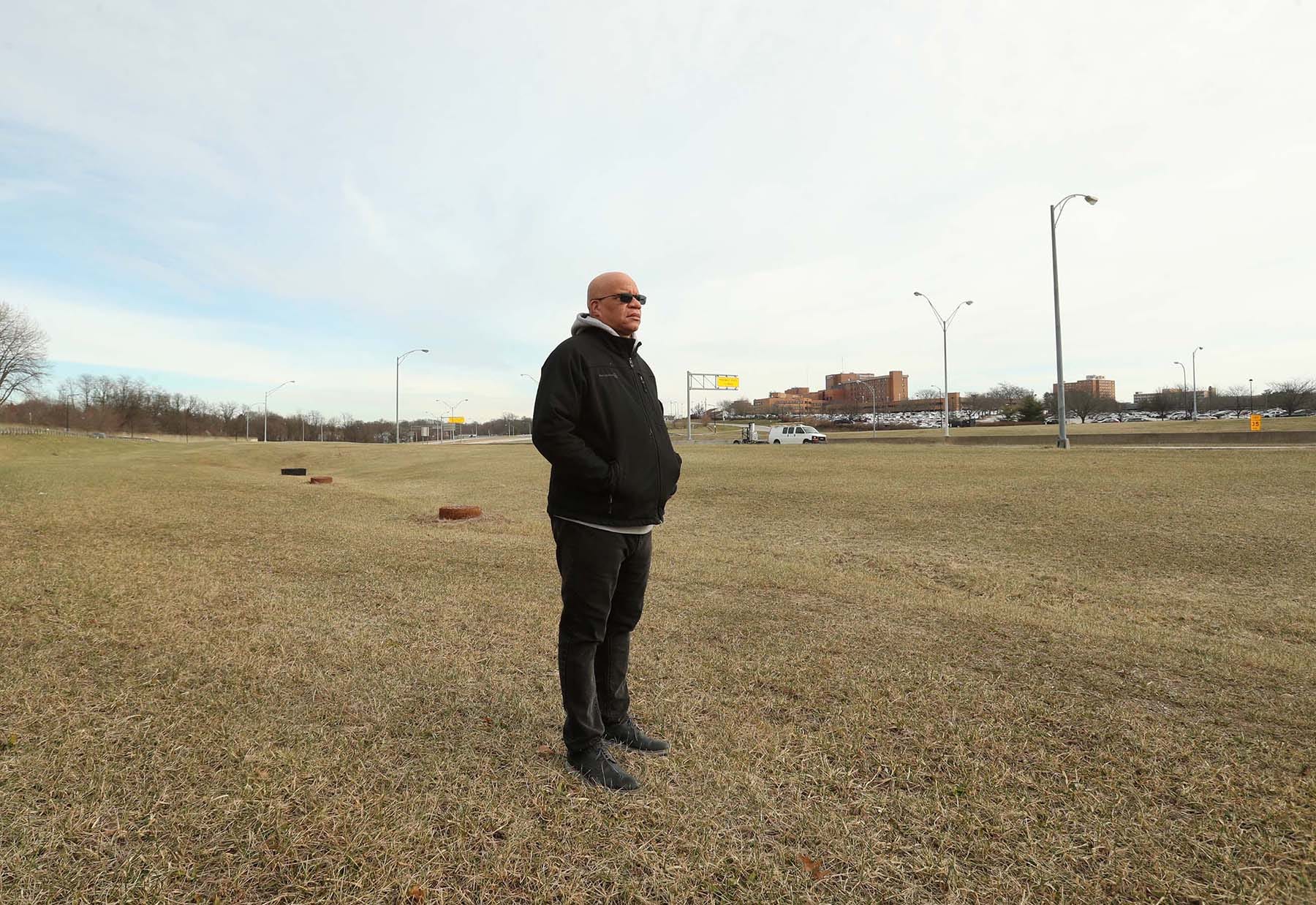
Karen Schiely, Akron Beacon Journal
The Rev. Greg Harrison, whose family was displaced from their home at 636 Douglas St. in the 1960s, said the lack of ramps enabled white people from the suburbs to travel to downtown Akron without having to enter any Black neighborhoods. At the same time, it severed access for the people living in the neighborhoods.
“It was a bypass of the Black neighborhoods… at the cost of Black neighborhoods,” Harrison said.
Segedy, too, views the Innerbelt more as a “blight removal” tool and urban renewal project than a well-thought-out transportation project.
“It was literally a road to nowhere,” he said.
Construction on the highway lasted until 1987. Despite its $300 million price tag — a combination of state and federal funds — the Akron Innerbelt ultimately never connected to Route 8 because the money had dried up.
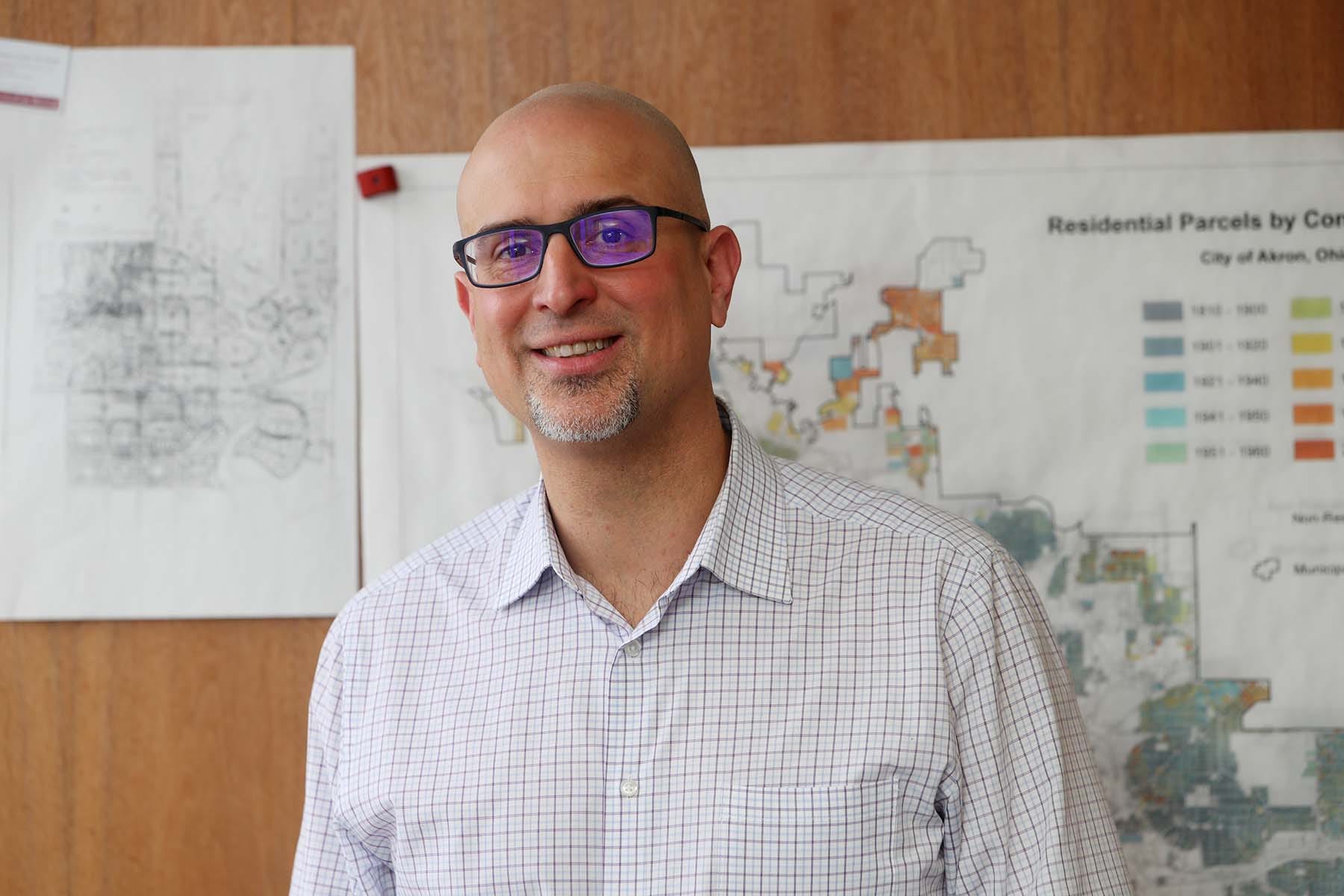
Karen Schiely, Akron Beacon Journal
The highway did not actually bring more traffic or wealth from the suburbs to downtown. On the contrary, Segedy believes the road made it easier for people, and wealth, to continue moving outward and away from the city.
Designed to accommodate 120,000 cars daily, by the early 2000s the Innerbelt saw only about 18,000 cars per day.
A 1977 paper by Frank J. Kendrick, a political science professor at the University of Akron, details how the Innerbelt further segregated the city and carried with it a host of other negative socioeconomic and environmental consequences — in exchange for saving suburban drivers 1.25 minutes of driving time.
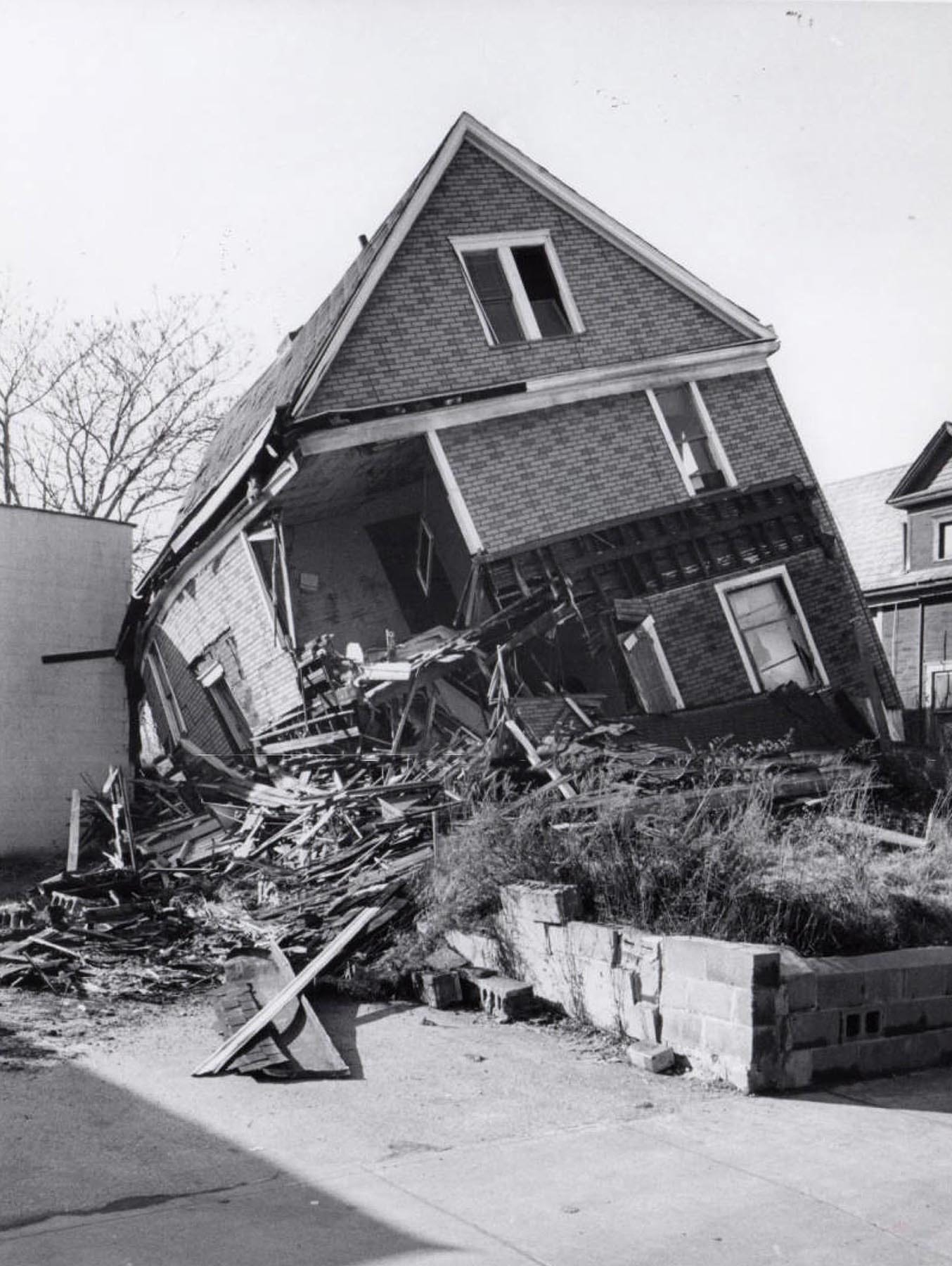
Segedy said most people who were displaced by the Innerbelt ended up in worse housing situations.
Willie Johnson watched many neighbors, including homeowners, move into public housing, which municipal records show the city pushed aggressively during relocation efforts.
“I believe that a lot of people ended up in Section 8 because it was probably the quickest fix — not a real fix, but to solve an immediate problem of ‘where do we go from here?’ And I think many of them got trapped into Section 8 [housing],” he said.
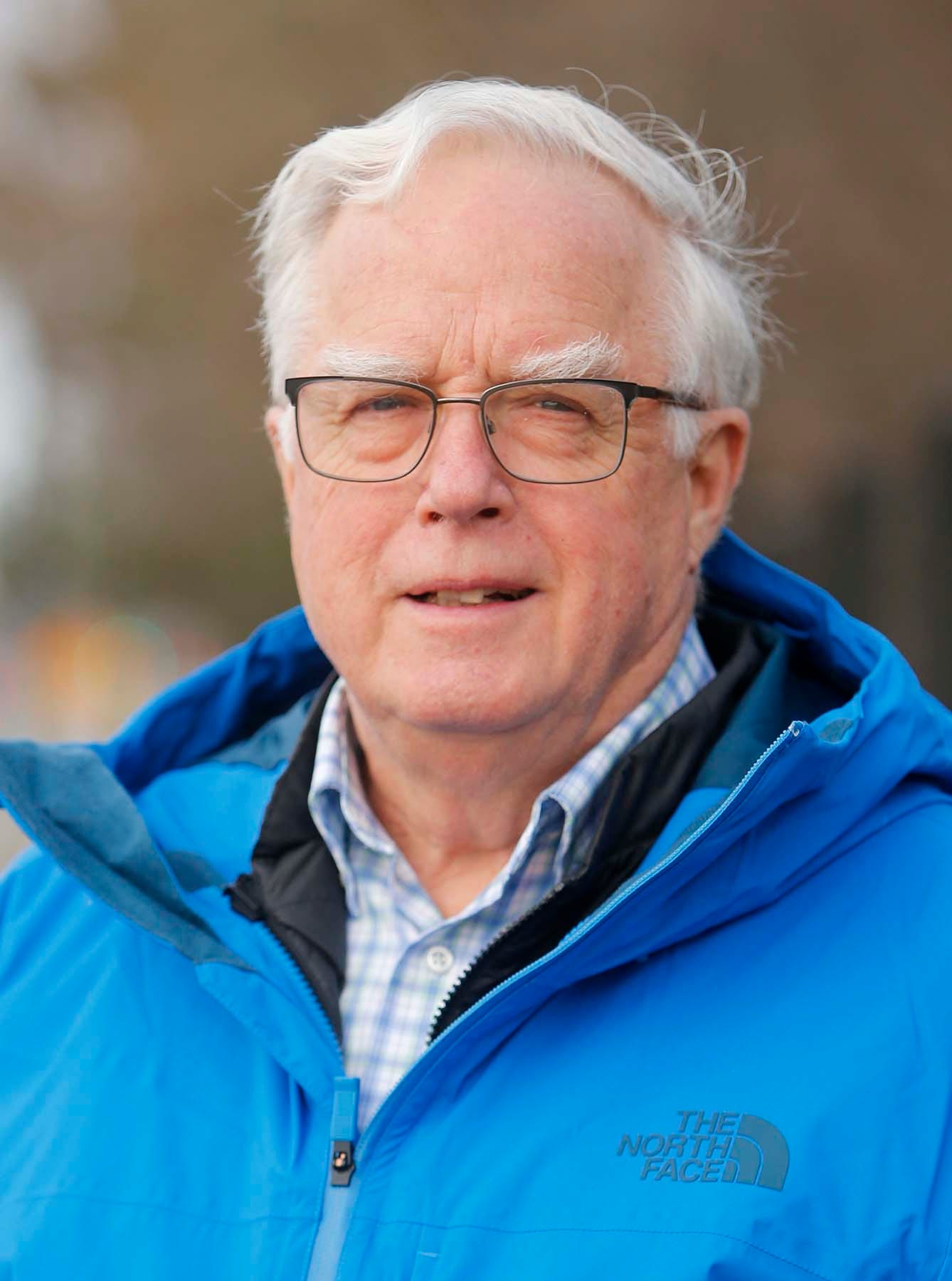
Karen Schiely, Akron Beacon Journal
Tom Fuller, former executive director of Alpha Phi Alpha Homes Inc., a nonprofit that provides housing for low-income seniors in Akron, many of whom are Black, was a social worker in the city’s relocation office in the 1970s when the Innerbelt was being constructed. He went door to door helping to implement the city’s policy of relocation and supporting families that were being displaced to find new housing.
At the time, Fuller was unaware of how the Innerbelt project fit into larger systems of economic segregation and harm toward Black communities.
“I was interested in helping people get a leg up and that’s what we were trying to do,” he said. Though he was able to help some renters transition to first-time homeownership or otherwise improved conditions, he estimates that only about 25% of people ended up in better situations.
Today, Fuller sees the ongoing reverberations of the injuries inflicted by the Innerbelt and urban renewal more generally.
The Innerbelt relocation program offered displaced renters the opportunity to purchase homes, with up to $4,000 in state funds toward a down payment. Renters had to match anything over $2,000.
White affluent or white middle class communities had the wherewithal to block highway construction. … So the existing pattern of highway construction today — what was built and what wasn’t built — conforms to a racially and economically skewed pattern of political resistance that was successful largely in white affluent communities and not successful in poor and/or minority communities.”
Beacon Journal reports from 1972 show the Ohio Department of Transportation dragged its feet on advancing down payment assistance to people experiencing hardship, in violation of state law. Without money for a down payment, many renters remained in limbo and unable to move. As a result, nearly a year after the city began to purchase homes in the path of the highway’s second phase of construction, only 30 of the 487 affected families — many of whom were renters — were relocated.
In a 1972 Beacon Journal article, Roland A. Nesslinger, who was then deputy director of the State Highway Department’s right of way division, justified the state’s deferral of payments by claiming renters might spend relocation funds on color television sets or cars instead of the “more important responsibility of using the money for adequate housing.”
Fuller recalls how entire neighborhoods were declared “dilapidated” in spite of the quality of some of the homes in them. In order to secure federal funding for urban renewal and highway projects, cities had to deem entire neighborhoods as being “unfit for living.”
“It would appear based upon my other reading that it was intentionally targeting African American communities,” he said.
Once the damage was done, any good housing stock that remained in those neighborhoods became impossible to maintain. Homeowners would never see the return on their investment.
Lovie Moore’s father purchased her family’s home on Rhodes Avenue near the future site of the Innerbelt in 1957 for $14,450, or $143,370 today. Sixty-five years later, the 2,269-square-foot home is appraised at a mere $35,740.
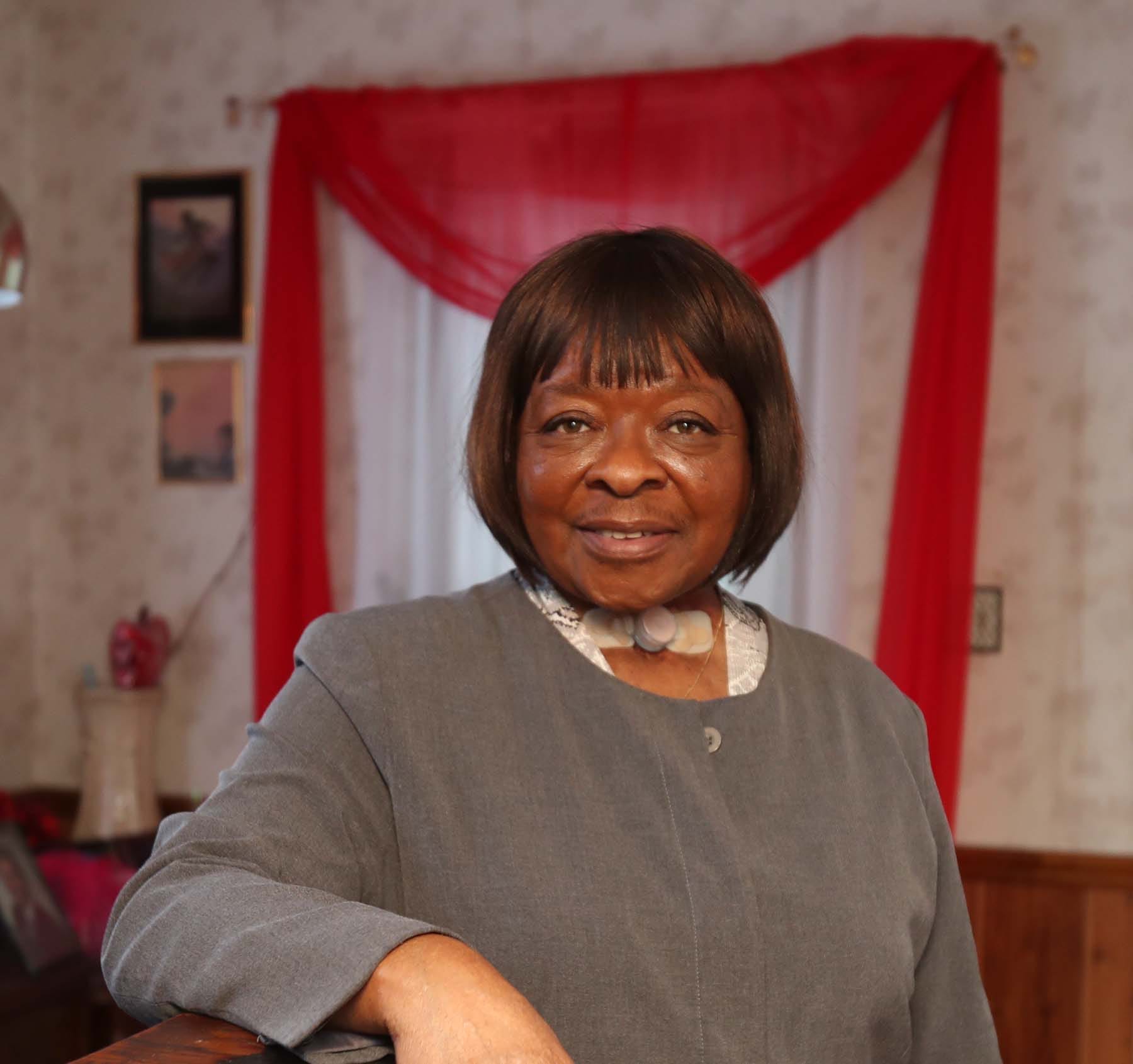
Karen Schiely, Akron Beacon Journal
Moore, who is 73 and inherited the home with her siblings, has lived on the street since she was a little girl.
“If it was white people that lived there, the value wouldn’t be that low and they would have had more access to loans to renovate than we do. It would be easier for them to get a loan to renovate their property and beautify the neighborhood than we do, what’s left of it,” Moore said.
Moore has worked hard to maintain her home — her front lawn is perfectly manicured and the home was recently painted a bright white and green — but the neighborhood looks different now. There are few homeowners left, and many people rent. Pockets of vacant land dot the landscape.
“It’s just nothing like it used to be, you know, with the tearing down, with the Innerbelt and all of that. Everything is missing,” she said.
“A lot of those homes were good homes,” she added.
Neighborhoods destroyed by urban renewal projects like the Innerbelt were socioeconomically diverse and thriving, Avila said. He pointed to examples in other parts of the country where thriving middle class neighborhoods — and even wealthy Black neighborhoods, like the Sugar Hill neighborhood of Los Angeles, which was cleared for the Santa Monica Freeway — were destroyed for highway construction.
“The idea that highways destroyed slums is a gross generalization that calls into question who was defining what slums were in the mid-20th century. It was an overwhelmingly white male planning profession,” he said.
Segregated housing policies of the early 20th century had forced Black families to live together regardless of income. Then urban renewal and highway projects destroyed this model of urban Black community and “fueled a kind of class segregation of African Americans,” Avila said.
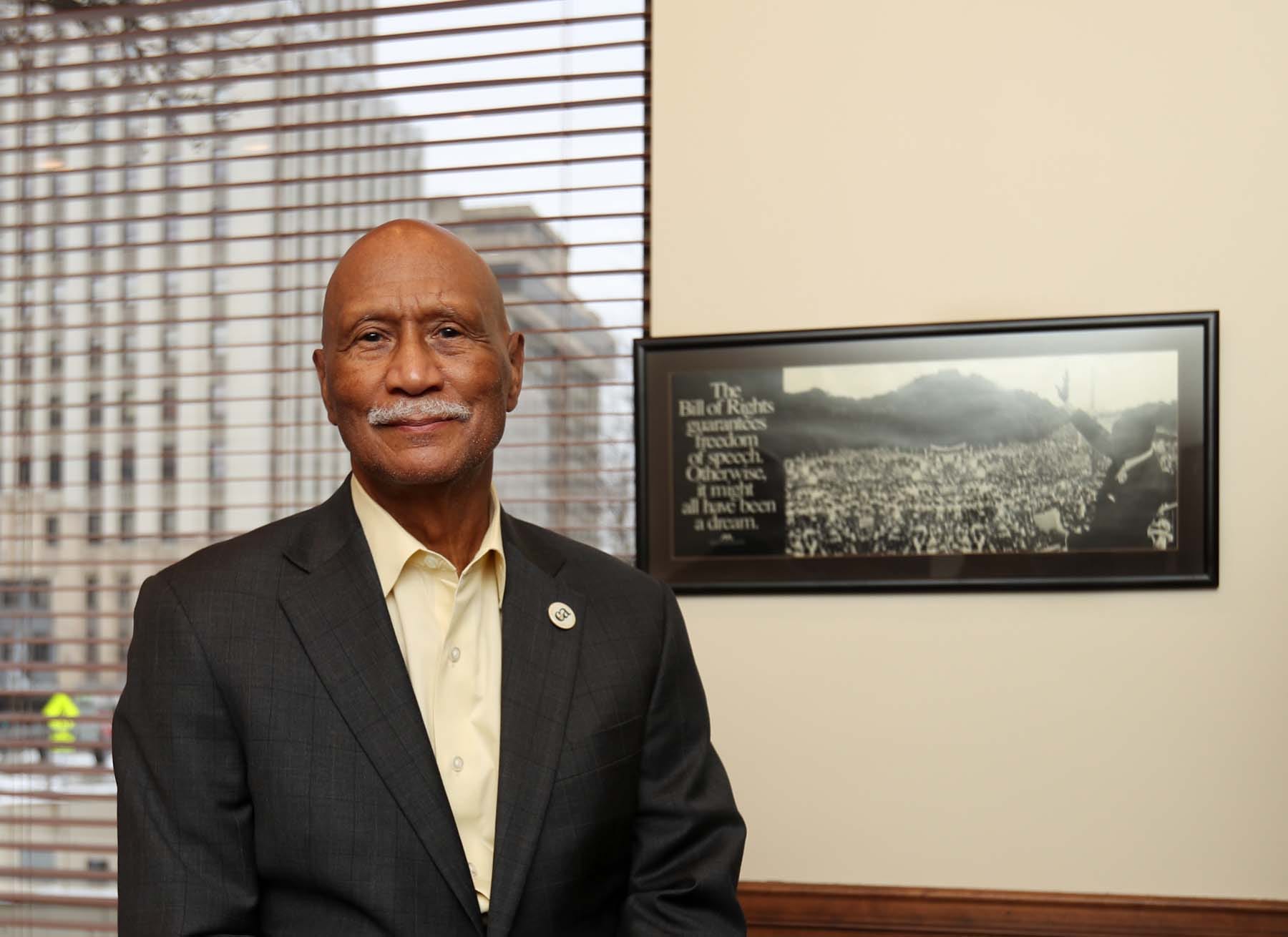
Karen Schiely, Akron Beacon Journal
Malcolm Costa, whose father used to own a barbershop on Wooster Avenue (now Vernon Odom Boulevard), remembers Black professionals, skilled workers and low-income families living together in his neighborhood.
“Doctors and attorneys — because of the housing policies — they lived in the same type of community as other Blacks and, I mean, I know personally because our doctor lived two streets from where we lived. … You had the professionals as well as the skilled laborer … plumbers, electricians, those types of households that were doing really well,” he said.
“It was by no means dilapidated,” he said of the neighborhood.
Costa now serves as CEO of Community Action Akron Summit, a nonprofit group that provides support to Akron’s low-income communities. The organization was established in 1964 as the Community Action Council as a response to the growing problem of urban poverty and housing insecurity that intensified during and after urban renewal.
Many of the families displaced by the Grant/Washington urban renewal project of the early 1960s ended up moving to West Akron, Costa said, unaware that they would be displaced again by Opportunity Park several years later. Eventually, the Innerbelt also came through West Akron, causing another round of displacement.
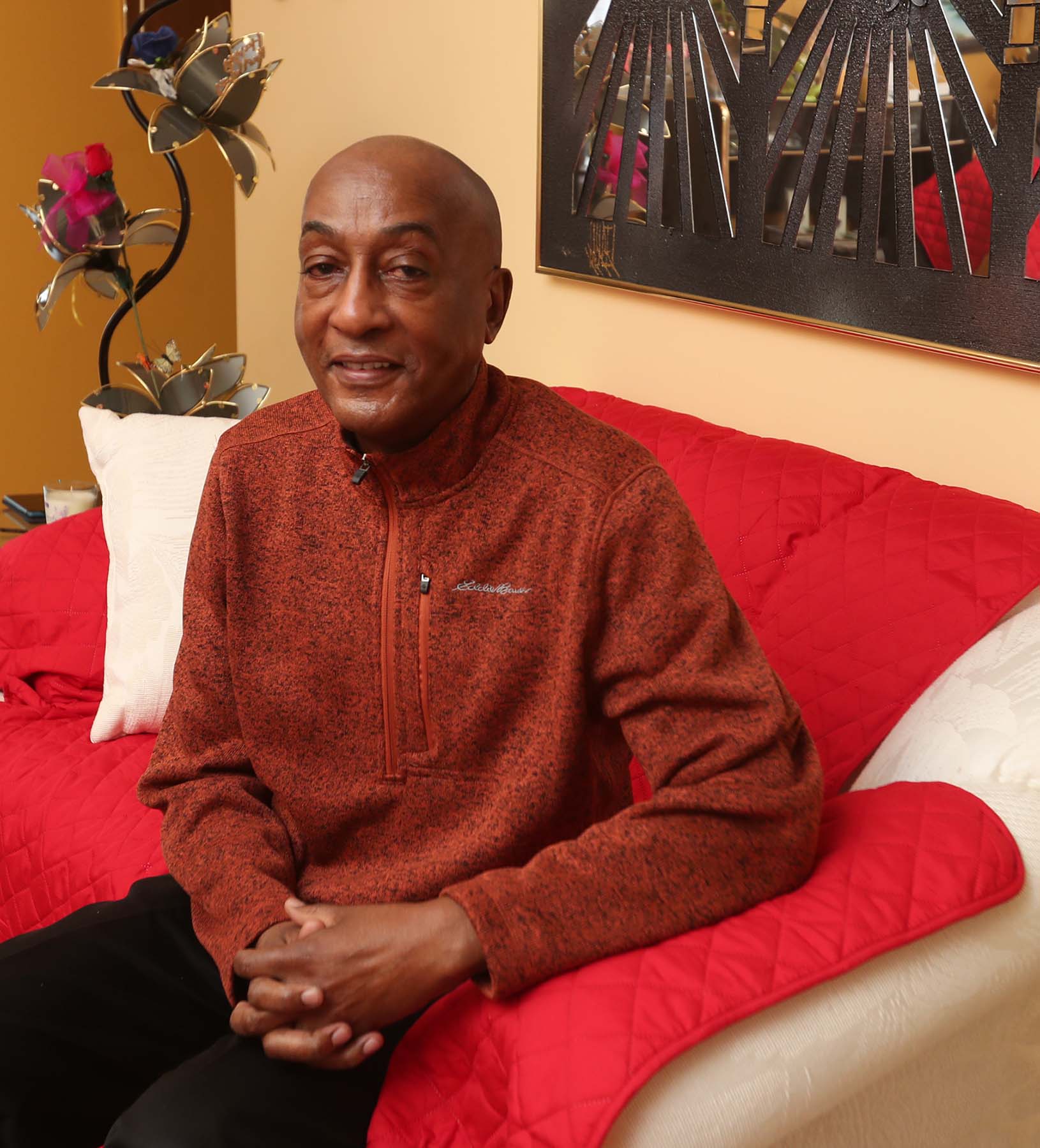
Karen Schiely, Akron Beacon Journal
“In many cases, people moved two or three times,” Costa said.
From a child’s perspective, relocation happened suddenly, seemingly without warning.
When Gordon Keaton and his family were displaced from their Damon Place rental when he was a teenager in the late 1960s, he didn’t understand all the changes happening around him. Adults focused on surviving and often didn’t talk about these things.
Where would his friends go, Keaton wondered, and where would his family end up when they were forced to vacate their apartment?
His family did not own a car. Keaton worried whether he would be able to walk to his friends’ new homes and maintain the relationships that were so crucial to him.
“Losing my friends, my relationships that I had developed there, how do I grieve that? Nobody — we didn’t know anything about the grieving process or grieving itself, the loss. … We’re all being displaced,” the 72-year-old recalled.
“That was a tremendous loss for me,” he said.
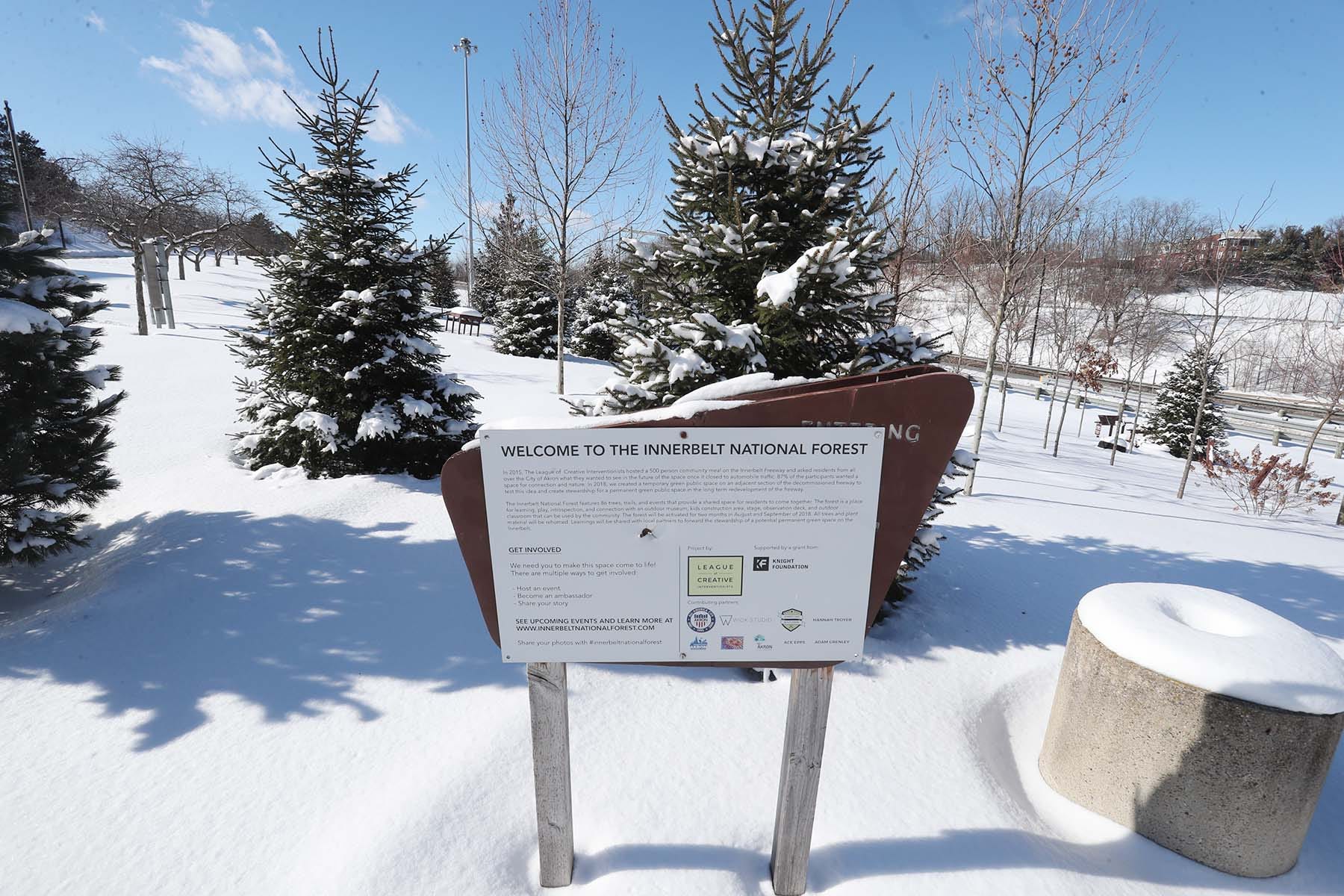
For Joey Johnson, the ill-fated Innerbelt destroyed Akron’s Black cultural heritage, erasing hope and identity.
“If you don’t have land, I’m not sure you can have an identity,” he said. “It’s very difficult to develop an identity with no stable land, foundation, community, those kinds of things. And areas where [Black people] develop those things … white folks went in and burned them down because they recognized the power of what was going on,” he said, drawing a connection between the ways officials used the law to destroy Black neighborhoods through highway projects and other stains in America’s history, like the violent erasure of Black business districts in Tulsa and elsewhere.
Johnson, who chairs the mayor-appointed Racial Equity and Social Justice Task Force, urged city officials to keep an eye toward equity as they engage in conversations about how to redevelop the stretch of former highway north of Exchange Street.
As co-chair of the task force’s housing subcommittee, one of Johnson’s chief concerns is the lack of safe and affordable housing in a city where 85% of the housing stock is over 100 years old. In addition to increasing homeownership rates among the city’s Black residents, the subcommittee recommends new affordable housing or rehabilitation near the Innerbelt and in other socioeconomically disadvantaged neighborhoods.
“The people who are left down there, they are at a dead end, and we have to think about giving them opportunities, help them build wealth,” he said.
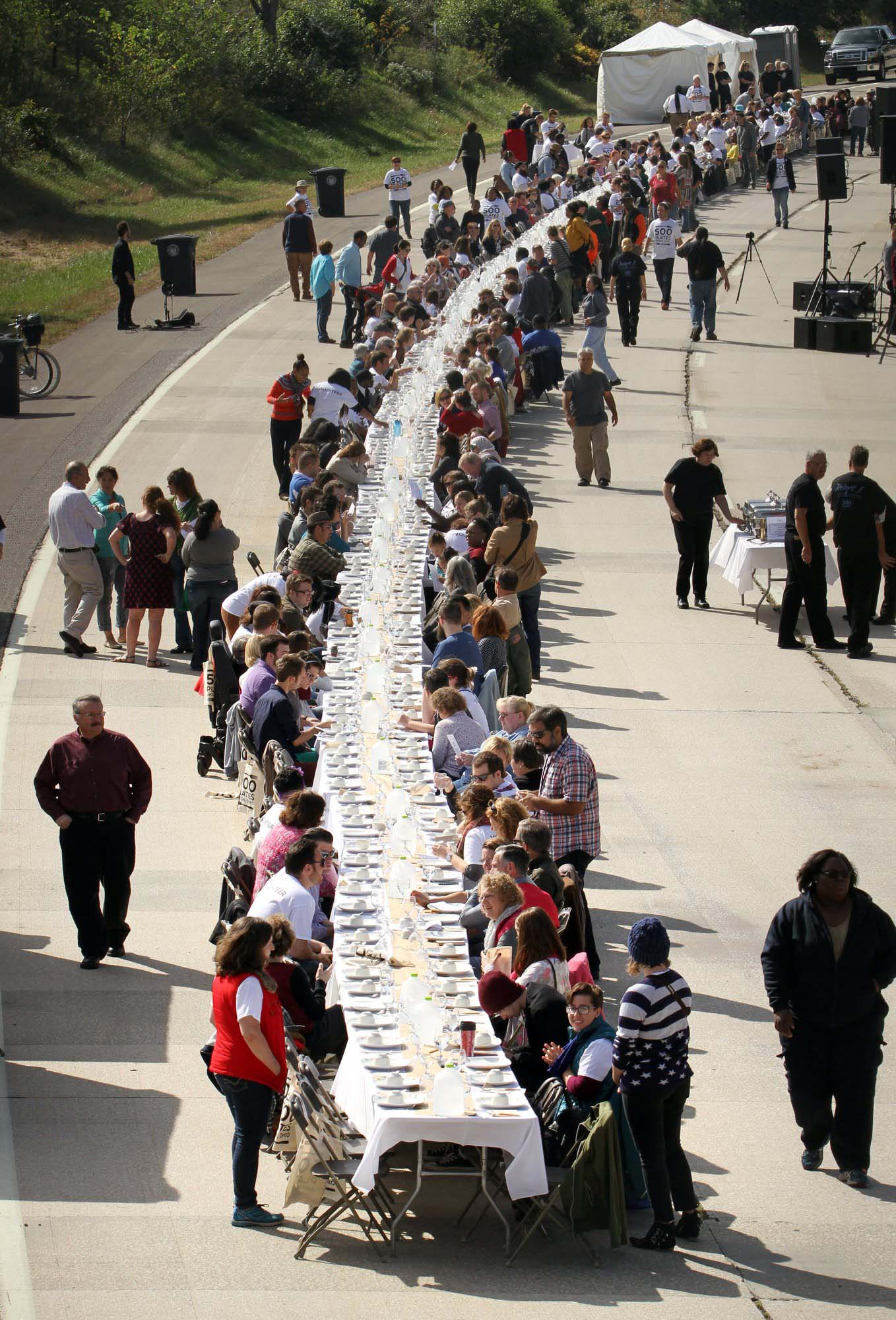
Akron Beacon Journal file photo
Current residents and people whose families were displaced by the Innerbelt told the Beacon Journal they want to see more investment in their neighborhoods, from affordable housing and increased opportunities for homeownership to workforce development, recreational and enrichment programs for children and support for small businesses. They also pointed out that the area is a food desert, with dollar stores and gas stations but few full service grocery stores.
Past redevelopment proposals for the Innerbelt have included a public space, such as a park, Segedy said.
In 2015, the Knight Foundation awarded a $96,200 grant to San Francisco-based artist Hunter Franks to host a 500-person dinner on the site of the now-vacated stretch of highway. (The city closed the road for one day to accommodate the event). Participants were encouraged to share how they would like to see the space redeveloped.
Following the input of diners, in 2017, Franks’ organization, the League of Creative Interventionists, received another $214,420 Knight grant to transform the space into a “temporary urban forest.” Visitors to the forest could enjoy concerts, goat yoga and other programs.
Despite the largely positive press these interventions received, some of those closely involved hold a more skeptical view.
Community organizer Beth Vild, who worked on the “500 Plates” event, expressed concern about the lack of meaningful, sustained outreach to Black communities that had been impacted by the highway, among other issues.
“It was just a tokenizing event to show that things could be happening on Route 59 and that things should be reimagined and that we need a white savior from out of town to do it,” she said.
Nevertheless, Vild is hopeful that Liz Ogbu, a Bay Area-based urban designer who is committed to “engaging and transforming unjust urban environments,” could help steer the city in a better direction.

Nye’ Lyn Tho
“I hope it’s a different age that we are walking into with her. … I want to have the best hopes for where that is going, because we need it,” Vild said.
Including impacted communities in the redevelopment process is a priority for Ogbu, whom the city hired last spring to lead the informal advisory committee tasked with discussing the future redevelopment of the Innerbelt.
Launched by former Deputy Mayor James Hardy, the Innerbelt Advisory Committee consists of 13 diverse community members, including former displaced residents, elected officials, downtown business people, artists and community advocates.
The project comes at an opportune time.
President Joe Biden’s $1.2 trillion infrastructure plan, signed last fall, includes a $1 billion initiative aimed at reconnecting communities that have been divided by local highway projects. Akron can apply for a share of that money.
Depending on what it decides to do with the land, the city could apply for additional grants. Segedy said the city also is open to exploring philanthropic support.
At the core of Ogbu’s mission is to use urban design as a vehicle to positively transform and heal communities.
“The way in which I work is often about ‘What does a reparative [design] process look like?’ ” Ogbu told the Beacon Journal.
“It’s really easy to do an envisioning process that is like, ‘What are all the cool things we can bring here? What are the beautiful spaces that we can create?’ … [But] a lot of times we’re actually building on a foundation of broken promises and crushed dreams. And when we build without a regard to also having an ability to hold space for that and acknowledge it and reckon with that, then often times you don’t engage people in the way that they need to be engaged and you create something that actually usually has a limited potential for success and also doesn’t meet the needs of a lot of people,” she said.
The people who are left down there, they are at a dead end, and we have to think about giving them opportunities, help them build wealth.”
The committee has dedicated some of its monthly meetings, which have so far been closed to the media and the public, to learning and sharing the history of the Innerbelt and how it set back Black residents for generations.
In March, the city plans to launch a public engagement process to hear residents’ input on redevelopment. Details of what that public engagement process will look like remain unclear, but Ogbu and Segedy said they anticipate a combination of in-person and virtual meetings. The city has launched a website, www.akroninnerbelt.com, where people can register with an email address to receive updates about the process.
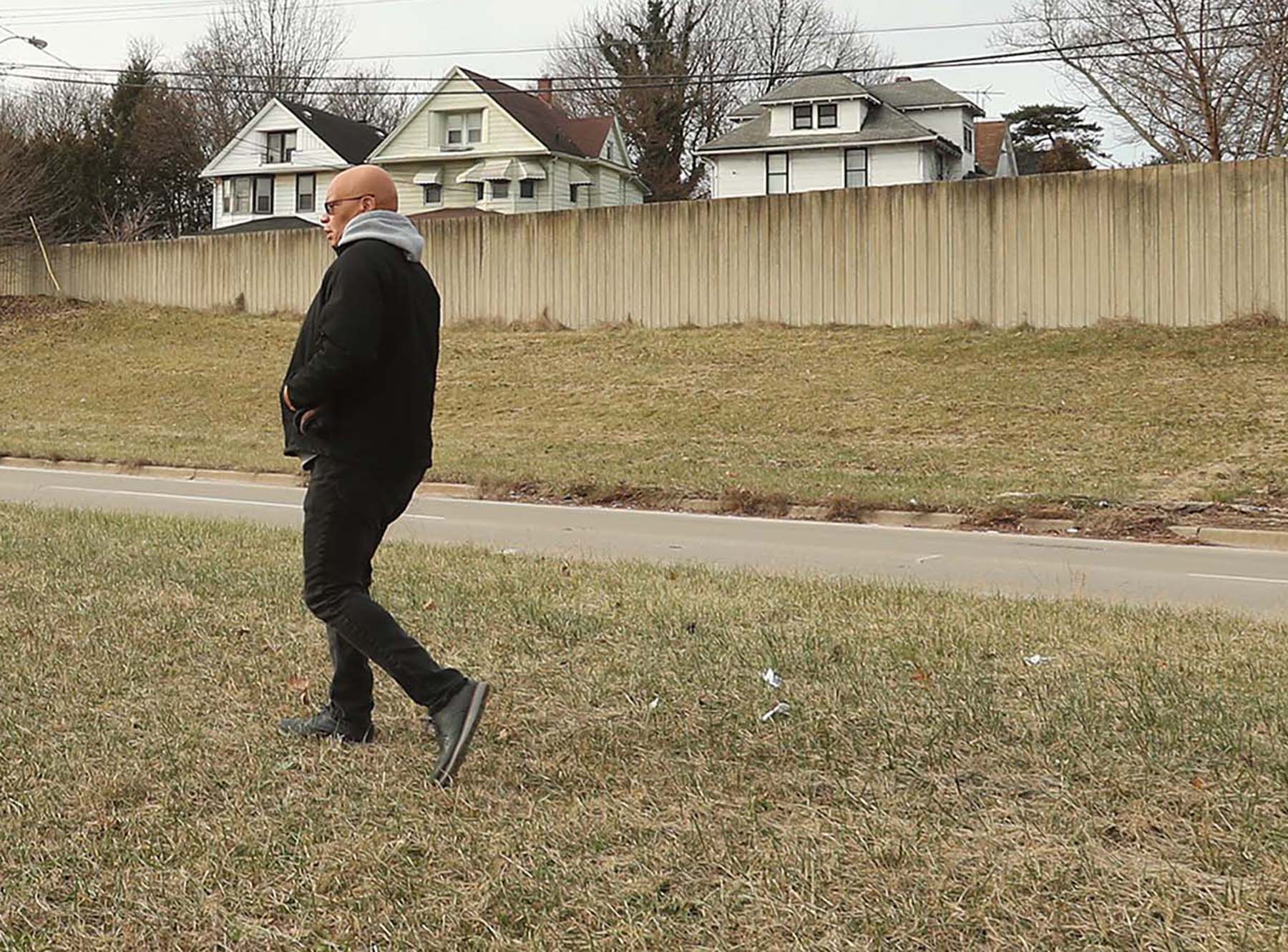
What could equitable redevelopment of the Innerbelt and its surrounding neighborhoods look like?
In January, Santa Monica launched the “Right to Return” program, which seeks to offer affordable housing to descendants of more than 100 Black and Latinx families who were displaced by the Santa Monica Freeway in the 1960s.
In St. Paul, Minnesota — home to the historically Black community of Rondo, which was demolished in the 1950s and 1960s for Interstate 94 — residents and advocates teamed up with the state legislature and state department of transportation to devise a plan to reconnect the community while keeping the road intact. The proposal is to build a community land bridge which would “cap” the freeway and allow for the construction of affordable housing and businesses on top of it.
Ogbu said she is interested in implementing a community support program in Akron similar to the 11th Street Bridge Park in Washington, D.C.
Initiated in 2016, the 11th Street Bridge Park will be an elevated park over the Anacostia River. To the east of the river are the predominantly Black communities of Wards 7 and 8, which have long experienced disinvestment.
Vaughn Perry, director of equity at Building Bridges Across the River at THEARC, the nonprofit that spearheaded the park project, explained that when redevelopment projects come in, residents often rightfully fear their neighborhoods will be gentrified and that they will be displaced. To counteract this, the 11th Street Bridge Park, with the input of the community and extensive collaborations with other nonprofits and the local government, launched a series of programs to aid residents in workforce development, job training, homeownership and cultural preservation.
Perry said his organization raised $75 million — almost as much as the construction cost of the park itself — to reinvest in Wards 7 and 8.
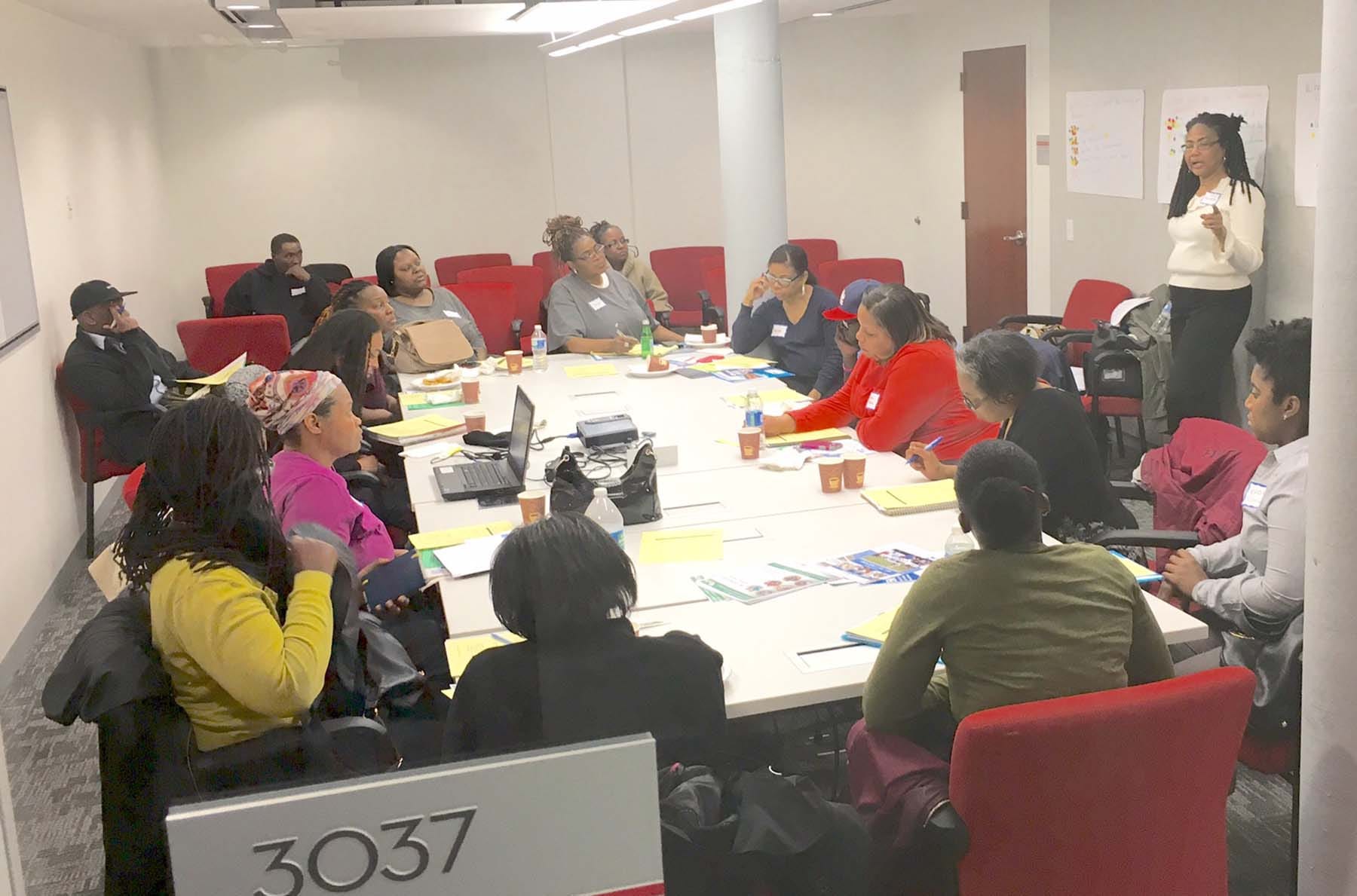
11th Street Bridge Park
The nonprofit collaborated with other area organizations to host tenant rights workshops and launched the Ward 8 Homebuyers Program. Now in its fifth year, the homebuyers program has seen almost 1,400 participants and enabled about 100 people to purchase homes in the neighborhood.
The nonprofit also established a community land trust as another avenue for affordable housing and wealth creation.
“These are people who have come from generations of renters who are now being able to shift the potential for wealth in their family by being able to purchase a home,” Perry said.
Technical assistance, loans and workshops also are available to small-business owners. Many small businesses had to transition to e-commerce because of the ongoing COVID-19 pandemic, Perry said, so his organization offers services like web support.
The nonprofit sees the construction of the bridge itself as an employment opportunity for Ward 7 and 8 residents.
“We wanted to make sure that when the bridge was being built, it can be built by a majority of people that live in this community. So we have been providing training for the last four years around construction training,” Perry said. Additional workforce development programs geared toward the hospitality and retail industries will launch before the park breaks ground.
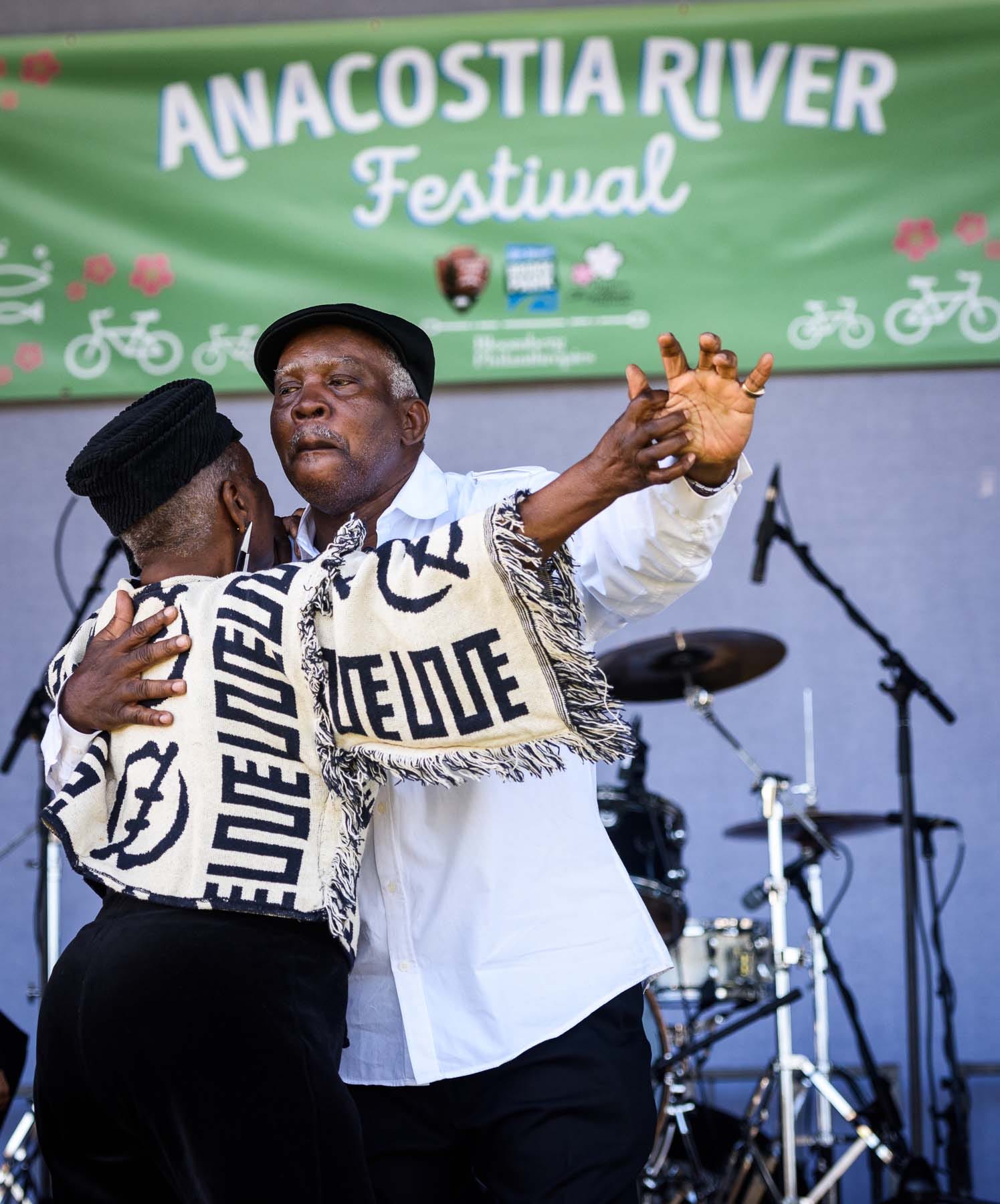
Jeff Salmore
Perry said the 11th Street Bridge Park also has been working to preserve the traditions, culture and voices of residents through the Anacostia River Festival, which highlights local artists, and its Community Leadership Empowerment Workshops.
Though Perry’s organization is nonprofit, he said that this model of equitable redevelopment can be replicated by any organization, including local governments, because it requires deep collaboration among residents, elected officials and community organizations.
Relationship-building and involving residents in every step of the envisioning, planning and execution process is key, he said.
Community engagement should eliminate as many barriers as possible, whether that means going directly into neighborhoods to knock on doors and attend their community meetings or carefully timing town halls so that working families can attend them. Offering child care and food during meetings also can increase participation, he said.
“At the crux of this is relationship-building,” Perry said. “All of the strategies came from our community. … We’re not going in and trying to give solutions, but we believe that the solutions are always in the community. We believe the community can identify their own problems, and they also can identify their own solutions. And so for us, it’s how do we bring additional resources to these solutions that the community says … will help [them] become more resilient?”
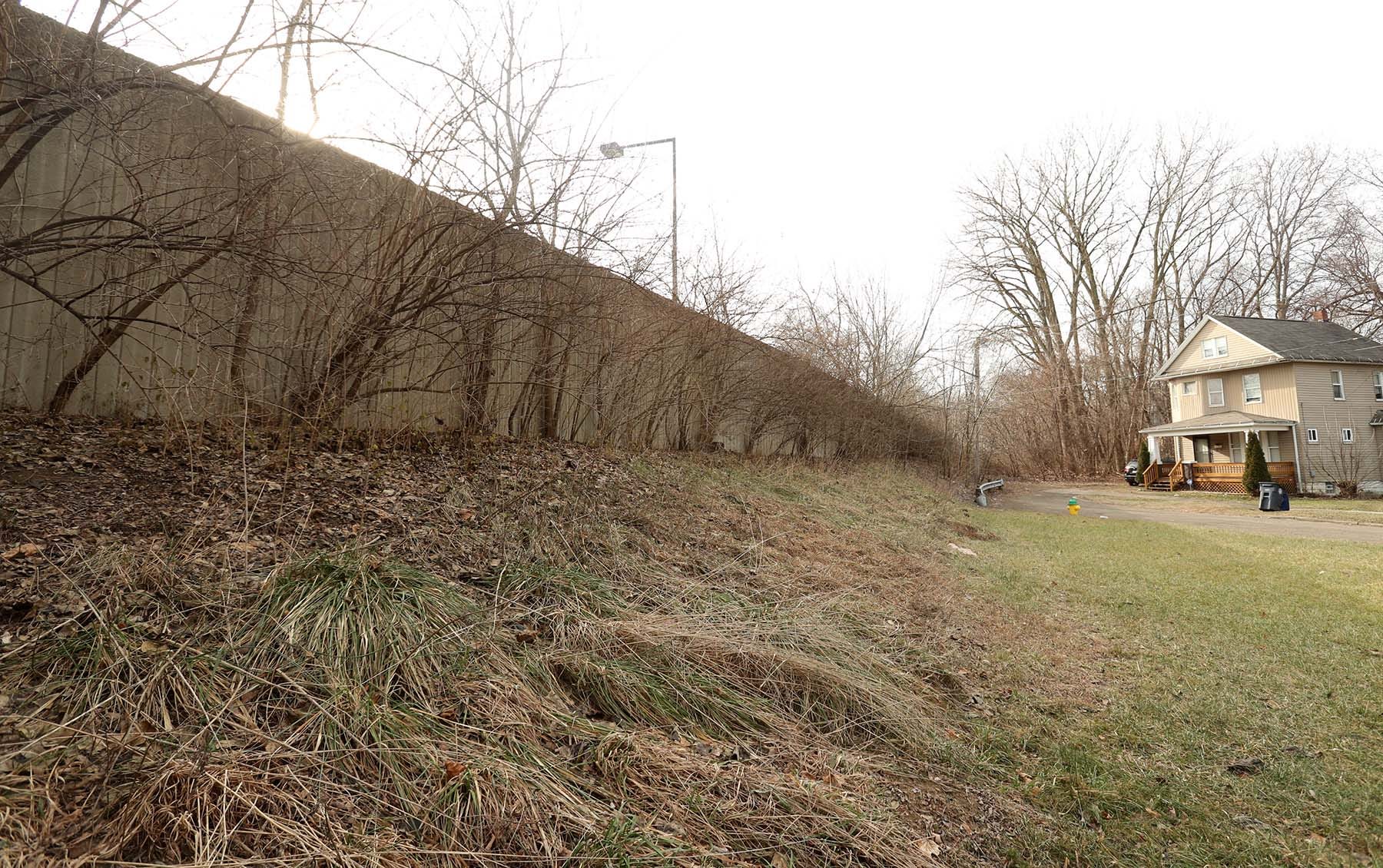
Karen Schiely, Akron Beacon Journal
Whatever plan Akron adopts, it must take into account the unique challenges posed by the site itself, including accessibility, Segedy said.
The highway is sunken and filling it would be cost-prohibitive, he said, though he and other city officials did not offer a figure for how much filling the land would cost.
“Because the city owns the land, the city has a lot of power to steer how the land is developed, if they so choose,” said Ben Crowther, program manager for the Congress for the New Urbanism’s Highways to Boulevards and Freeways Without Futures initiatives.
“You can easily leverage that land’s value to create reparative programs, one that restitches and heals community wounds,” he added.
Crowther encouraged meaningful public engagement efforts, including transparency in the request-for-proposals stage of the process.
He also pushed back on Akron’s position that filling the sunken stretch of highway would be too expensive. Rochester recently filled a 0.6-mile sunken stretch at the eastern end of the Inner Loop highway.
If you really want to do what’s right, talk to the children of the Innerbelt, and let’s find a way to rebuild what you destroyed: African American community.”
Erik Frisch, former manager of special projects at the city of Rochester, said filling 150,000 cubic yards of the highway cost about $3 million. For a total of $24.25 million, the city was able to develop six acres of that land into townhouse apartments, retail, green space and bike lanes. Federal funding covered the majority of the cost.
“Other than healing the physical scar of a highway, it was not about healing the wounds of the neighborhood,” Frisch said.
Rochester’s plans to redevelop the next section of the Inner Loop highway seeks to incorporate the input of the communities who had been displaced by the highway as well as those who still live in the highway’s vicinity.
In Akron, Ogbu said it will take years to undertake such an ambitious redevelopment project and encouraged people to remain patient. She also emphasized the need for the city to build trust with residents.
“Those wounds are so deep that anytime you say you’re going to do a big project, people go back to that story. … The onus is on us to build that relationship of trust and to show that we are completely clear on what has happened before,” Ogbu said.
Segedy said that the lessons of the past will continue to guide the city’s approach to redevelopment.
“Akron was doing what a lot of cities had done to put these urban freeways in with little or no consultation of the people whose homes and livelihoods were affected. And so I think one goal here is to engage the public in efforts to try to reimagine what could happen there,” he said.
![The Rev. Greg Harrison stands on Douglas Street where he grew up and attended an elementary school at the end of the street with his neighbors and friends. The home his family rented was torn down to make way for the Innerbelt. [Karen Schiely, Akron Beacon Journal]](https://www.gannett-cdn.com/presto/2022/01/26/NABJ/cedbc811-d352-4547-b55a-e5a8f9b3d72a-innerbelt_harrison03.jpg)
Akron Beacon Journal file photo
Those who were adults when the city took the homes and dreams they had worked hard to build are no longer alive. But their surviving children, who are seniors now, continue to feel the economic and emotional shocks of dispossession.
One of them, Greg Harrison, is cautiously optimistic about the redevelopment of the Akron Innerbelt. He believes the city has a moral obligation to build trust with and engage the families whose communities, land and wealth were stolen by the highway’s construction.
“You can’t repair all of the damage, but you can repair some of it,” he said.
“If you really want to do what’s right, talk to the children of the Innerbelt, and let’s find a way to rebuild what you destroyed: African American community.”
This story was published with the support of a fellowship from Columbia University’s Ira A. Lipman Center for Journalism and Civil and Human Rights.
Doug Livingston contributed to this report. Seyma Bayram is a corps member with Report for America, a national service program that places journalists into local newsrooms. Learn more at reportforamerica.org. Contact her at sbayram@thebeaconjournal.com or 330-996-3327 or on Twitter @SeymaBayram0.






















































